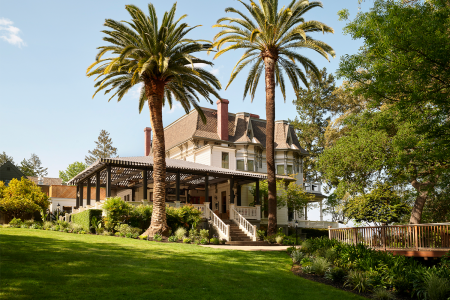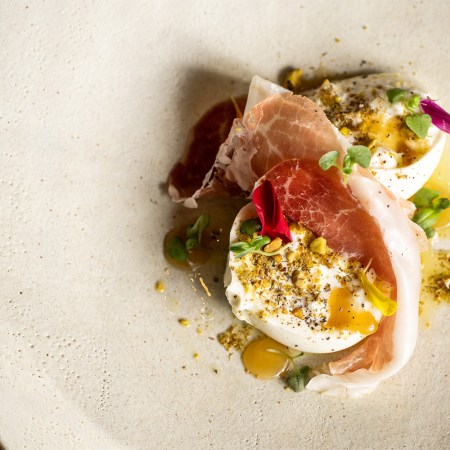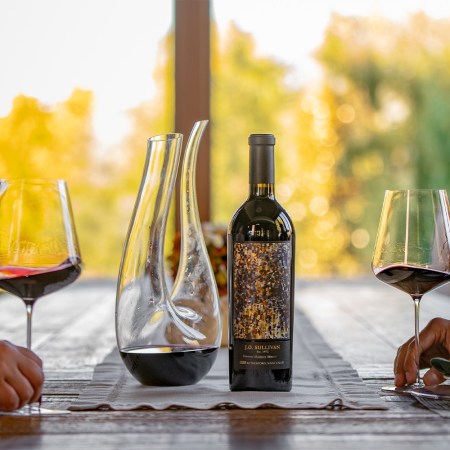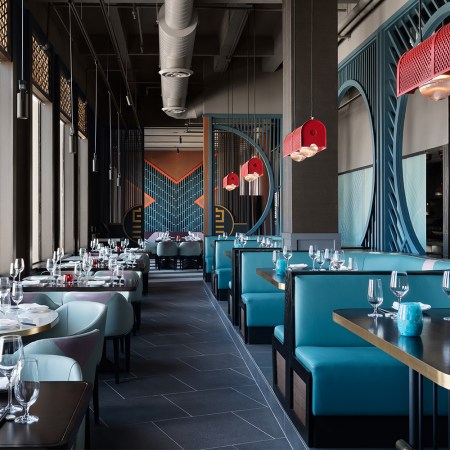About 40 minutes south of Portland, a little town called McMinnville is quietly becoming the center of hospitality for Oregon wine country. With old-growth trees, mountain views and a historic downtown area, it’s easy to see why visitors are drawn to this city as a home base while exploring the rolling vineyards that surround it. Its appeal is different when it’s your hometown — as it is mine. It might make me laugh that Third Street, the downtown area where I hung out as a high schooler, is now a destination for visitors from Portland, San Francisco and beyond. It’s also not the same place where I grew up, strictly speaking.
The latest improvement is a boutique luxury hotel called the Tributary, from Shaun Kajiwara and Katie Jackson (a member of the Kendall-Jackson family), which follows the opening of the 36-room Atticus Hotel in 2018. Unlike that property, the Tributary consists of only eight suites, each of which are spacious enough to feel like their own apartment. Housed in a 100-year-old building that was previously a hardware store (and, for a time, a dance studio where I took ballet lessons), the suites are all located on the second floor of the structure, with an expansive restaurant, Ōkta, and a separate, hidden cellar bar situated below the restaurant. The building was restored in collaboration with MAP Architecture; Hacker Architecture designed Ōkta, with Carolyn Richardson collaborating on design direction and decor for both the hotel and restaurant.

At Ōkta, which is named for a unit of measurement that describes cloud coverage and helmed by chef Matthew Lightner (of Portland’s Castagna and more recently of Atera fame, where he received two Michelin stars), the food is mostly sourced from the restaurant’s own nearby half-acre, hand-tended farm. Up near Ribbon Ridge, what’s in season at the permaculture acreage is what dictates the menu, and not vice versa. Across 13 courses, which includes three desserts, and sometimes a few extra nibbles, Lightner displays his wizard-like sensibilities for transforming vegetables into small portraits of Oregon.
A beet “jerky” nails everything from salt to texture, and thinly sliced cucumbers are so flavorful they outshine the albacore in an early ceviche-style dish. Buckwheat “popcorn” can be eaten separately or in the shoyu broth that sliced rockfish bathes in, with sea bean and lime offering a surprisingly fresh finish. Trout roe is great, but the carrot puree is greater, and even the striploin sang like it did because of the chanterelles and shallot cream it came in. While he uses delicious, locally sourced protein, Lightner is careful to let his love for the farm ingredients shine through — even in the final plates of lemon custard finished with lemon thyme, or a chrysanthemum tiramisu.
An Exquisite Renovation Makes the Madrona More Alluring Than Ever
We visited Healdsburg’s crown jewel after the recent $6 million overhaulDo not expect many, if any, of these plates to be repeated upon your own visit, as the menu changes with the seasons. If you take the time to go in for a tasting at this 26-seat restaurant, where the coursed menu runs between $165-$260 depending on the day (weekends are more expensive), make sure you splurge on the wine pairing for an additional $160. Unlike plenty of other pairings, the attentive sommelier, Ron Acierto, will pour between 8-10 generous glugs of both local and old-world vintages to bring out flavors that would otherwise go unrealized. Tasting quarter- and half-glasses from the number of bottles he brings out would be well over that price point, so if indulging in unusual and unexpected wines is part of your vacation mode, this pairing is unbeatable. (For those with less leisure time, an abbreviated option with fewer courses is also available on weeknights.)
Other recommended tasting rooms in the area are Archery Summit, a Pinot Noir-focused Dundee Hills vineyard where an actual wine cave is part of the tasting experience, and Gran Moraine Winery, a newer tasting room in Yamhill with a specialty in rosé and sparkling wines. There’s plenty of wine country to explore around the Willamette Valley, so I’ll leave the rest of the recommendations to your own research — but honestly, once checked into a suite at the Tributary, you may find yourself looking for excuses to stay in. Each suite is named after a river in Oregon, with five midsized “wanderer” suites, one midsized “adventurer” suite and two oversized “explorer” suites. Every room has a standalone soaking tub along with an enormous tiled shower, fireplace and sitting area.

If you’re somehow not already familiar with Le Labo, you’ll come away from the stay just as obsessed with Santal 33 as the rest of us; almost all the bath products on-site come from the New York brand. There’s also a fascinating Ratio coffee maker, which comes with its own set of instructions and freshly ground coffee that housekeeping refreshes daily. As for the daily continental breakfast, it’s expansive. Example dishes include fresh beet or carrot juice, fresh baked pastries, boiled eggs, an herb salad, a quiche or an omelet, fresh fruit, radishes, fresh bread, bacon, and a cheese and meat plate. Most of it, yes, comes from the Ōkta farm.
If a visit to Oregon, wine country or elsewhere, is in your near future, then a night or two at the Tributary will be absolutely on par with any other five-star property in Portland. Though I never thought I’d ever be writing that sentence about a hotel in my hometown, it definitely makes planning a visit to see my parents that much easier.
For more travel news, tips and inspo, sign up for InsideHook's weekly travel newsletter, The Journey.























